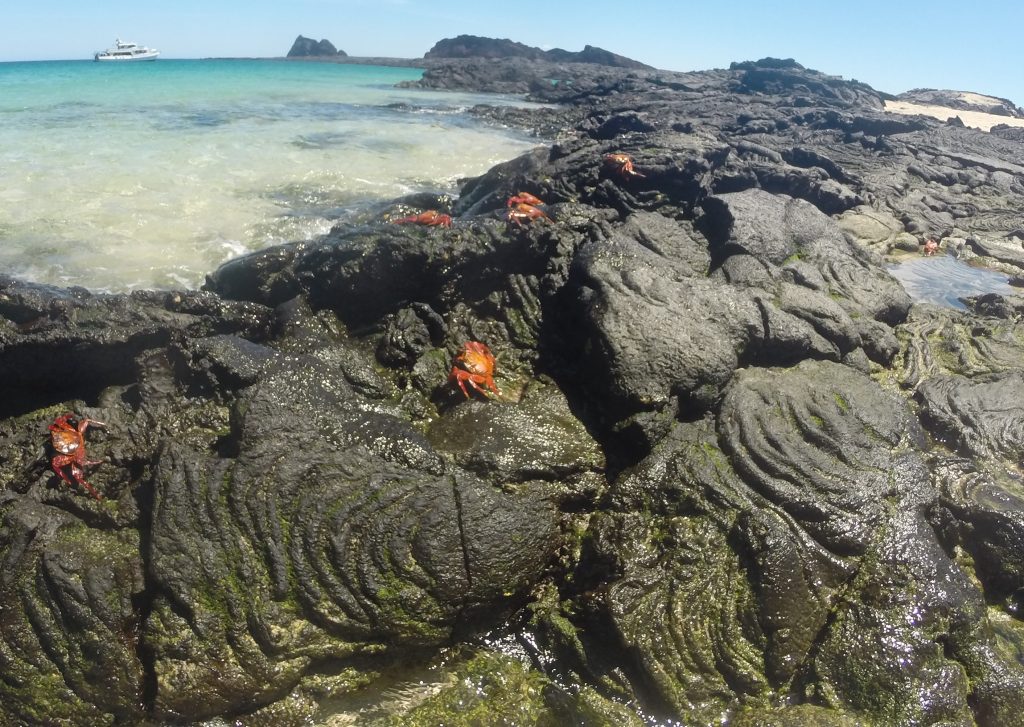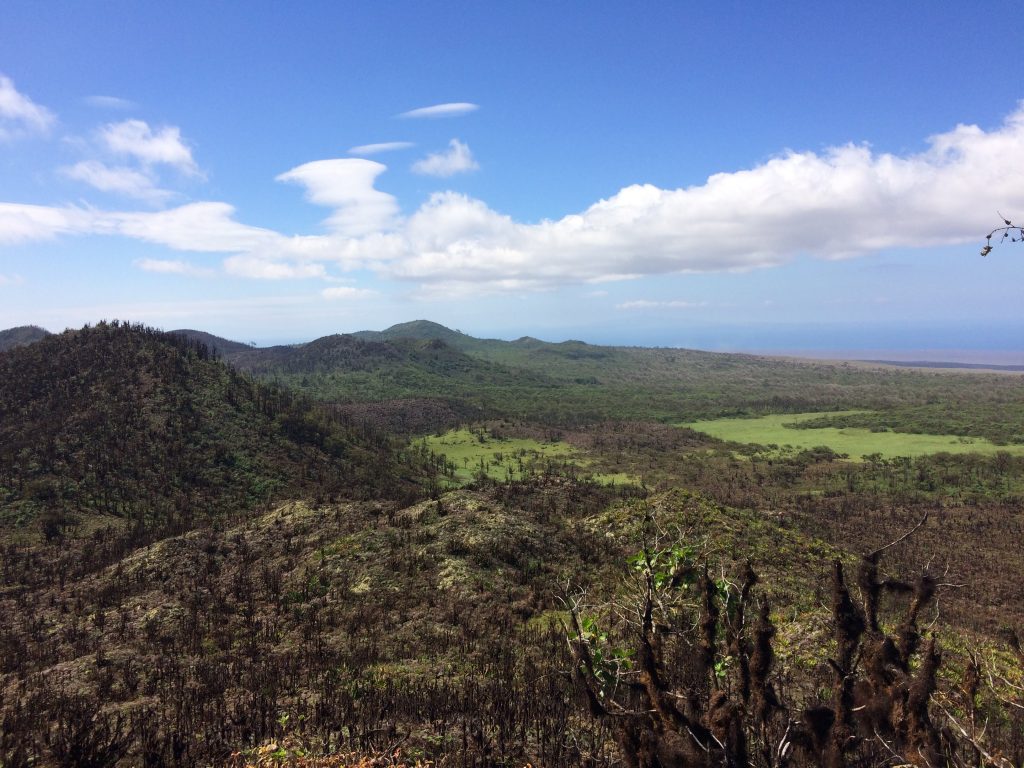By Lauren Dittmer 
The Galapagos Islands are a National Park and Marine Reserve which host some 225,000 tourists each year. Despite thralls of visitors, the archipelago is one of the most protected environments in the world. I spent six weeks here in 2018 and will be returning in January 2020. It is a destination I would encourage anyone to visit. The Islands boast beautiful landscapes, incredible hiking and world-renowned surf beaches. The Galapagos is rich in wildlife, with their endemic species being central to tourism. The world-class diving and snorkelling offered is a big draw for tourists. The Galapagos National Park guides are trained naturalists given exclusive access to take tourist groups to the more restricted areas of the Park, like to the active volcano on Fernandina Island. It is in this way the activities of tourists are kept under close observation, to limit harm the harm carelessness or ignorance might cause to the environment. The Charles Darwin Research station is an education facility and popular tourist attraction on Santa Cruz Island, which promotes sustainable living and teaches the significance of protecting the Galapagos and appreciating its importance. The Islands’ inhabitants champion this ethos and exemplify a care and respect for their natural surrounding that we should all adopt. The campaign against waste, emphasis on recycling and community spirited beach cleanups maintain the Islands’ untouched appearance.

Upon arrival, a $100 USD park entry fee is required, which is used to fund the conservation and protection of the Galapagos. Prior to check-in, bags travelling to the Galapagos undergo special security to screen for possible biological contaminants like foreign plant and animal matter that could pose a threat to the sensitive ecosystem on the islands. Although precautions are taken, this risk remains high and, to some degree, mistakes are unavoidable. In other ways, this trip to the Galapagos is not a great example of eco-tourism. The Islands are very remote, and the most common access onto them is by commercial flight. Visiting from the UK and taking at least three flights to travel over 6,000 miles by air is never going to be a sustainable journey. Although for some, concerns surrounding air miles might be reduced by the option for carbon-offsetting now offered by many major airlines. In terms of providing practical facilities for tourists, the Islands have seen an increased development of hotels, restaurants and amenities over the years which inevitably destroys habitats and disturbs the local environment. Moreover, increased cars onto the main inhabited islands create greater pollution and congestion.
As a tourist destination, the Galapagos endeavours to be as eco-centric as possible, and I think they have done well. Tourism is the single largest industry in economy of the Galapagos and is conducted in the most sustainable way possible. The maintenance of the environment and the protection of wildlife are at the forefront of decision making by the beneficiaries of tourism on the Islands. Moreover, the money spent on and just by visiting the Galapagos can be seen to directly benefit the members of the local community and the contribute to conservation for future generations to enjoy the Islands. Therefore, I couldn’t recommend the Galapagos Islands highly enough as an incredible and sustainable holiday destination.

By Muskan Arora
Recently I visited one of the most beautiful places of northern part of India: Uttarakhand. The state is very famous for its scenic beauty. After the rain you can smell the soil, feel the freshness of trees and the cold wind through your hair. The two main places where eco tourism was seen on a wide scale are Garhwal and Kumaoun. The snow covered mountains, the exotic bird and animal species and exotic flora with Rolling Meadows made my heart skip a beat.
In the capital city Dehradun, we stayed at a resort, which had tree houses because the government of Uttarkhand is strictly against deforestation. The resort was near a river and in my entire life; I had never felt so close to nature. The next day we visited Dhanaulti, which is located on the Garhwal Himalayan hills. We visited the Eco Park, which is home to the native deodar trees. The residents of Dhanaulti have always believed in preserving Mother Nature and their dedication towards keeping their environment clean and promoting afforestation touched my heart. There was also Kaudia forest, which is a very famous hiking path beyond the Knatal Resort, with narrow paths and trees surrounding us on all sides. Our tour guide informed us of the efforts the government has made to protect the area, and the animals that live in the neighbouring environment. As the path ahead unfolded we came to the plateau, which further led us into dense forests and spectacular views. There was also the Tehri Lake, an artificial reservoir constructed in conjunction with the the Tehri Dam. The water from Bhagirathi River fills this reservoir. The lake is famous for boating and is a sanctuary amidst nature.
While returning from the trip, I realised the importance of maintaining a link to nature and promoting awareness of the climate and environmental threats if we do not take care of our surroundings. Living in the urban areas makes us forget how it feels to be in nature, and we often take long flights and car journeys to reach it instead. Is this the growth or demolishing of the link between mankind and nature?


